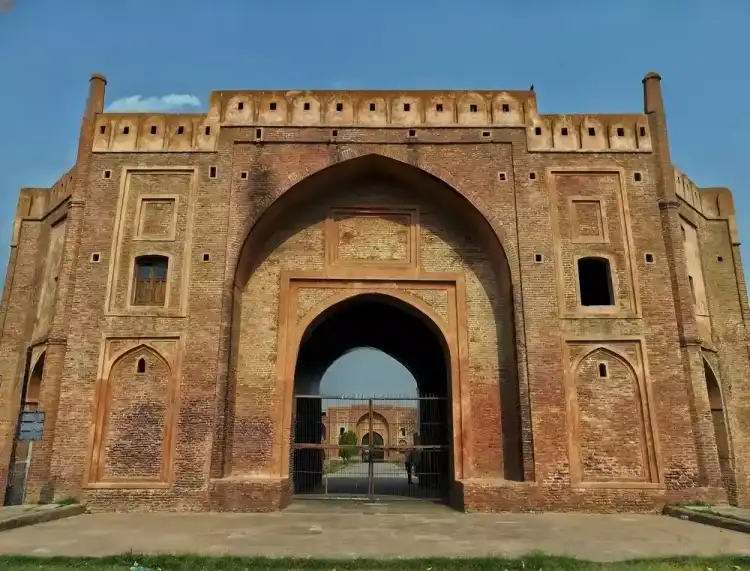Discovering Ludhiana: A Comprehensive Guide
Introduction to Ludhiana
Ludhiana, a prominent district in the Indian state of Punjab, is a vibrant city known for its rich history, diverse culture, and thriving economy. Situated on the banks of the Sutlej River, Ludhiana is often referred to as the "Manchester of India" due to its robust industrial sector. This article delves into the multifaceted aspects of Ludhiana, from its geographical significance to its cultural heritage and economic prowess.
Geographical Overview
Ludhiana is located in the northern part of India, in the state of Punjab. It is strategically positioned at the latitude of 30.91°N and the longitude of 75.85°E. The district spans an area of approximately 3,767 square kilometers, making it one of the largest districts in Punjab.
Climate and Topography
Ludhiana experiences a humid subtropical climate, characterized by hot summers, mild winters, and a monsoon season. The average temperature ranges from 7°C in January to 42°C in June. The Sutlej River, which flows through the district, plays a crucial role in its agricultural activities, providing essential water resources.
Historical Significance
Ludhiana's history dates back to the 15th century when it was established by the Lodhi dynasty of the Delhi Sultanate. Over the centuries, Ludhiana has witnessed various rulers and empires, each leaving an indelible mark on its cultural and architectural heritage.
Key Historical Events
- Founding by the Lodhi Dynasty: Ludhiana was founded in 1481 by Sikander Lodhi, the Sultan of Delhi, as a strategic military outpost.
- Mughal Era: During the Mughal period, Ludhiana flourished as a center of trade and commerce.
- British Colonial Period: The British established Ludhiana as a major industrial hub, introducing modern infrastructure and educational institutions.
Cultural Landscape
Ludhiana is a melting pot of cultures, reflecting the diversity and vibrancy of Punjab. The city celebrates numerous festivals with great enthusiasm, including Diwali, Baisakhi, and Lohri.
Language and Traditions
Punjabi is the predominant language spoken in Ludhiana, with Hindi and English also widely used. Traditional Punjabi customs, music, and dance forms such as Bhangra and Gidda are integral to the city's cultural identity.
Economic Powerhouse
Ludhiana is renowned for its dynamic industrial sector, particularly its textile and manufacturing industries. The city is a major producer of hosiery, woolen garments, and bicycles, earning it the moniker "Manchester of India."
Key Industries
- Textiles and Garments: Ludhiana is a leading producer of knitwear and hosiery, supplying to both domestic and international markets.
- Automobile and Machinery: The city is home to numerous automobile and machinery manufacturing units, contributing significantly to its economy.
- Agriculture: Despite its industrial focus, agriculture remains an essential part of Ludhiana's economy, with wheat, rice, and sugarcane being the primary crops.
Educational and Healthcare Facilities
Ludhiana boasts several prestigious educational institutions and healthcare facilities, making it an important center for education and medical services in Punjab.
Prominent Institutions
- Panjab Agricultural University (PAU): Established in 1962, PAU is one of the leading agricultural universities in Asia.
- Christian Medical College (CMC): Known for its quality medical education and healthcare services, CMC is a renowned institution in Ludhiana.
Administrative Framework
Ludhiana is governed by a well-structured administrative framework that ensures efficient management and development of the district. The Ludhiana Municipal Corporation oversees urban governance, while the district administration handles rural areas.
Key Administrative Bodies
- Ludhiana Municipal Corporation: Responsible for urban planning, infrastructure development, and public services within the city limits.
- District Administration: Headed by the Deputy Commissioner, this body manages rural administration, law and order, and implementation of government schemes.
Tourist Attractions
Ludhiana offers a plethora of tourist attractions, ranging from historical monuments to modern recreational spots.
Must-Visit Places
- Lodhi Fort: A historical fort built by the Lodhi dynasty, showcasing the architectural brilliance of the era.
- Punjab Agricultural University Museum: A museum that provides insights into the agricultural history and heritage of Punjab.
- Rural Olympics at Kila Raipur: An annual sports festival that highlights traditional Punjabi sports and games.
Culinary Delights
Punjabi cuisine is renowned for its rich flavors and diverse dishes, and Ludhiana is no exception. The city offers a gastronomic journey that is sure to tantalize your taste buds.
Popular Dishes
- Makki di Roti and Sarson da Saag: A traditional Punjabi meal made from cornflour bread and mustard greens.
- Butter Chicken: A famous dish that originated in Punjab, featuring chicken cooked in a creamy tomato sauce.
- Lassi: A refreshing yogurt-based drink, often enjoyed as a dessert.
Notable Personalities
Ludhiana has produced several prominent personalities who have made significant contributions to various fields, including literature, politics, and sports.
Celebrated Figures
- Amrita Pritam: A renowned Punjabi poet and novelist, known for her literary works that explore themes of love and social justice.
- Milkha Singh: The legendary athlete, also known as the "Flying Sikh," hails from Ludhiana and has brought glory to India in the field of athletics.
Suggested Diagram
Conclusion
Ludhiana is a district that beautifully encapsulates the essence of Punjab with its rich history, cultural diversity, and economic vitality. Whether it's the bustling markets, the historical landmarks, or the delectable cuisine, Ludhiana offers a unique experience that reflects the spirit of Punjab. With its strategic location, vibrant industries, and warm hospitality, Ludhiana continues to be a significant contributor to the cultural and economic landscape of India.
